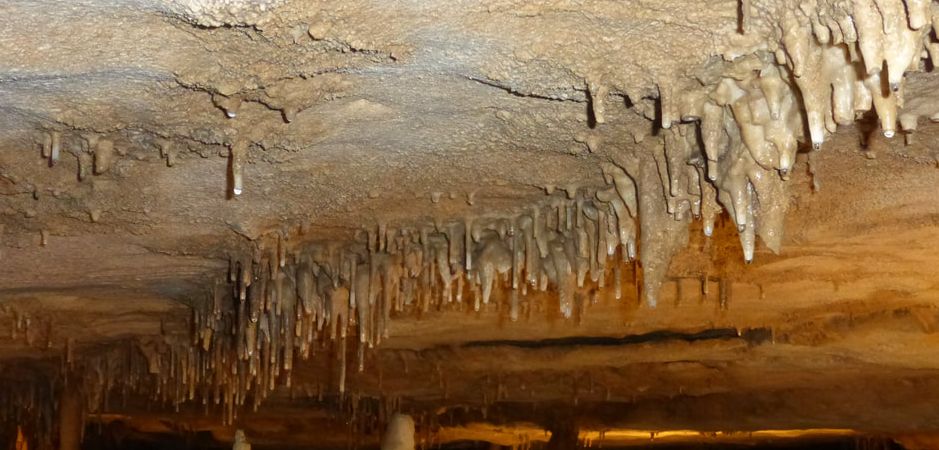A stalagmite is an upward growing mound of mineral deposits that have precipitated from water dripping onto the floor of a cave.
Stalagmites develop when water drips to the cave floor.
Stalagmite a mineral feature that can develop in moist caves.
Stalactites hang from the ceiling of a cave and are formed from mineral deposits left behind from slowly dripping water.
This is why you usually find stalactites and stalagmites in pairs and sometimes they ll even grow together to form one big column.
A stalagmite is usually larger in diameter.
Most of these structures which resemble upside down icicles have rounded or flattened tips.
Most stalactites have pointed tips.
As the water drips from the ceiling above the two are formed simultaneously.
A stalagmite appears like an inverted stalactite rising from the floor of a cavern.
Stalactite and stalagmite elongated forms of various minerals deposited from solution by slowly dripping water.
A stalactite hangs like an icicle from the ceiling or sides of a cavern.
The drip rate must be slow enough to allow the co 2 to degas from the solution into the cave atmosphere resulting in deposition of caco 3 on the stalactite.
Soon enough a stalagmite will form in a conelike shape.
The water dripping from the end of a stalactite falls to the floor of a cave and deposits more calcite into a mound.
A stalactite is an icicle shaped formation that hangs from the ceiling of a cave and is produced by precipitation of minerals from water dripping through the cave ceiling.
A stalagmites grow in the same way but forms from from the cave floor upward.










